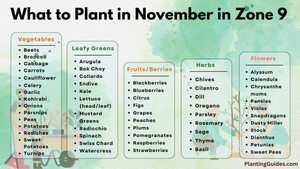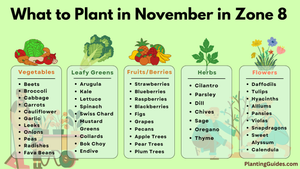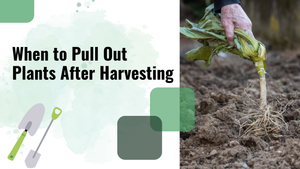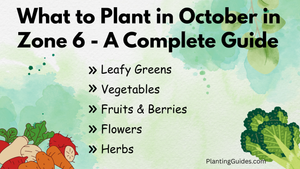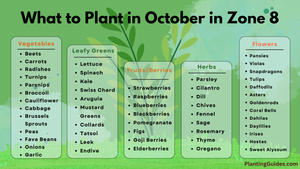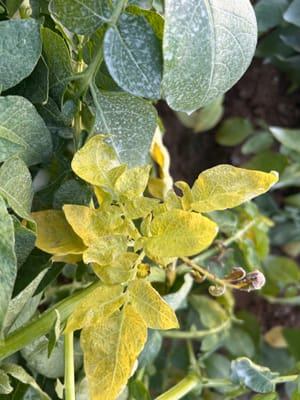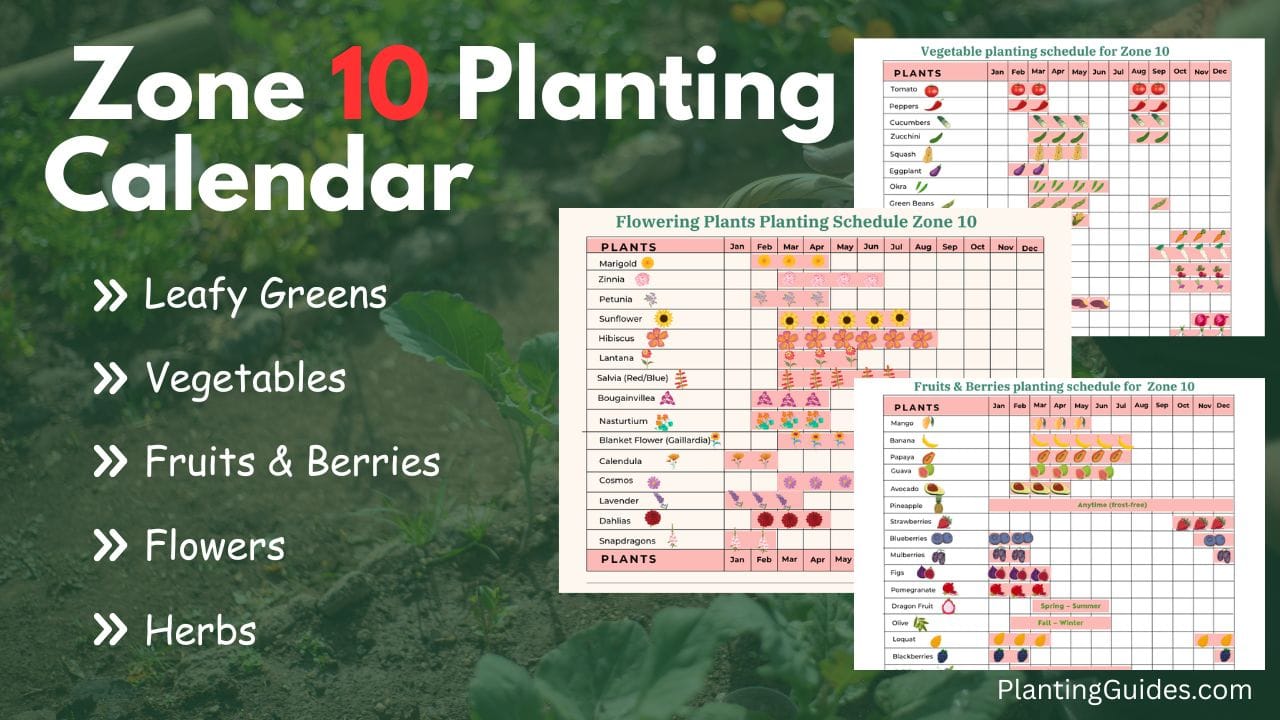
If you live in Zone 10, you're in one of the best places for gardening. Seriously, while people in other areas are dealing with snow and frost, you can still grow fresh veggies, herbs, fruits, and flowers almost all year round.
Zone 10 is one of the USDA Plant Hardiness Zones. It covers warm places like Southern Florida, Southern California, and parts of Hawaii. In winter, the temperature here usually doesn’t go below 30°F (-1°C).
I have spent a lot of time reading gardening books, checking planting charts, and talking to a few experienced gardeners, and let me tell you, Zone 10 is a dream for plant lovers. With warm weather, lots of sunshine, and almost no freezing days, it’s a great place to grow all kinds of plants, from tomatoes to tropical fruits. You just have to plant the right things at the right time.
This guide is based on detailed research from gardening experts, online communities, and real gardeners who shared what works best in their Zone 10 yards.
Leafy Greens Planting Calendar
Leafy greens grow fast, love sun (but not too much heat), and don’t need fancy care. In Zone 10, you can plant most greens in early spring, fall, and even winter.
Some greens grow better in cool weather, so it’s best not to plant them in the middle of summer unless you can give them some shade.
| Leafy Green | Best Planting Time | Planting Method | Transplanting Time | First Harvest | Variety Recommendations |
|---|---|---|---|---|---|
| Lettuce | Sept – Feb | Direct seed or transplant | 3–4 weeks after germination | 30–50 days | Butterhead, Romaine, Red Sails, Black Seeded Simpson |
| Spinach | Oct – Jan | Direct sow | Not usually needed | 35–45 days | Bloomsdale, Space, Tyee |
| Kale | Oct – Feb | Direct seed or transplant | 4–5 weeks after seeding | 50–60 days | Curly Kale, Lacinato, Red Russian |
| Swiss Chard | Sept – March | Direct sow or transplant | 4–5 weeks after seeding | 45–55 days | Bright Lights, Fordhook Giant |
| Mustard Greens | Sept – Feb | Direct seed | Not necessary | 30–40 days | Southern Giant, Green Wave |
| Collard Greens | Oct – Feb | Direct seed or transplant | 4–6 weeks after seeding | 60–80 days | Georgia Southern, Vates |
| Arugula | Sept – March | Direct sow | Not needed | 20–30 days | Rocket, Astro, Slow Bolt |
| Mizuna | Sept – March | Direct seed or transplant | 3–4 weeks after seeding | 21–40 days | Kyona, Miz America |
| Endive/Escarole | Oct – Feb | Direct seed or transplant | 4 weeks after germination | 60–90 days | Frisée, Batavian, Broadleaf Batavian |
Visual Chart:
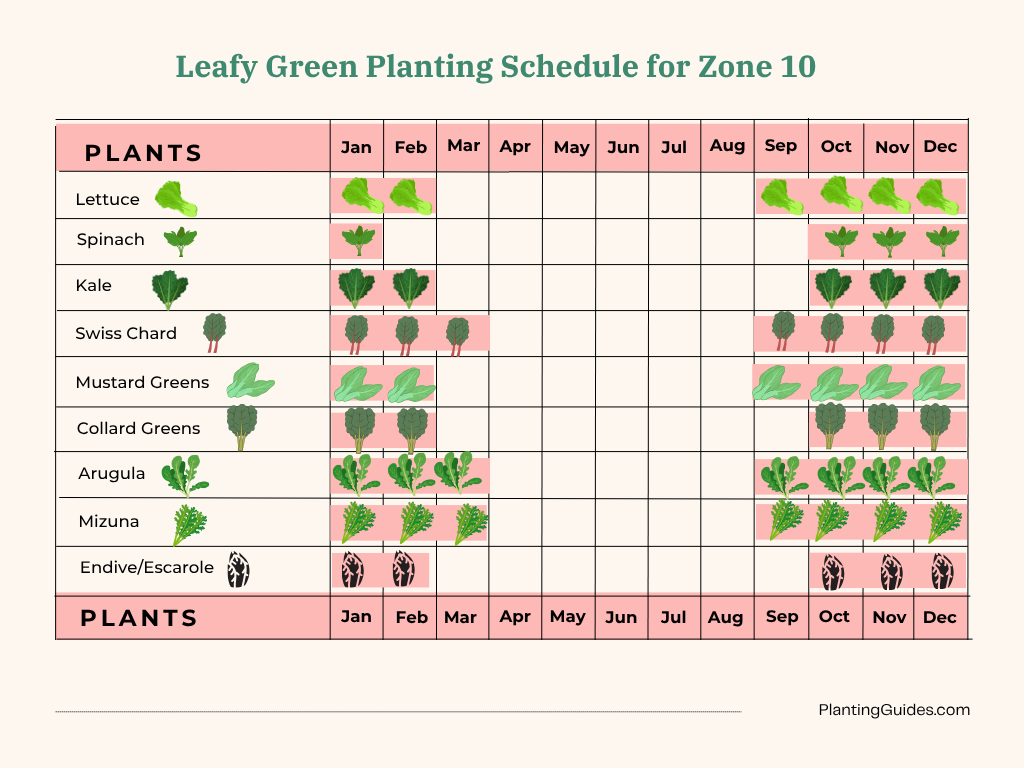
In Zone 10, leafy greens grow best during the cooler months, from fall to early spring. If you plant them in summer, the heat can cause them to bolt (start flowering early), taste bitter, or not grow properly.
Also, if you want to grow them in summer, you have to use partial shade or water them more.
Vegetable Planting Schedule for Zone 10
Zone 10 has warm weather almost all year, making it perfect for growing a wide range of vegetables. You can grow both summer and winter crops if you plant them at the right time.
Below is a table of the best vegetables to grow in Zone 10 with key details to help you plan your garden better.
| Vegetable | Best Planting Time | Planting Method | Transplanting Time | First Harvest | Variety Recommendations |
|---|---|---|---|---|---|
| Tomatoes | Feb–March, Aug–Sept | Start indoors or buy starts | 4–6 weeks after sowing | 60–85 days | Roma, Celebrity, Sun Gold |
| Peppers | Feb–March, Aug–Sept | Start indoors or buy seedlings | 5–6 weeks | 70–90 days | Jalapeño, California Wonder |
| Cucumbers | March–May, Aug–Sept | Direct sow or transplant | 3–4 weeks | 50–70 days | Marketmore 76, Lemon Cucumber |
| Zucchini | March–May, Aug–Sept | Direct sow | Not needed | 50–60 days | Black Beauty, Cocozelle |
| Squash | March–May | Direct sow | Not needed | 50–90 days | Yellow Crookneck, Butternut |
| Eggplant | Feb–March, Aug–Sept | Start indoors or buy starts | 5–6 weeks | 70–90 days | Black Beauty, Ichiban |
| Okra | March–June | Direct sow | Not needed | 55–70 days | Clemson Spineless, Red Burgundy |
| Green Beans | March–May, Sept | Direct sow | Not needed | 50–60 days | Blue Lake, Contender |
| Sweet Corn | March–May | Direct sow | Not needed | 70–100 days | Silver Queen, Peaches & Cream |
| Carrots | Oct–Feb | Direct sow | Not needed | 60–80 days | Nantes, Danvers |
| Radishes | Sept–March | Direct sow | Not needed | 25–35 days | Cherry Belle, French Breakfast |
| Beets | Oct–Feb | Direct sow | Not needed | 50–70 days | Detroit Dark Red, Chioggia |
| Turnips | Oct–Feb | Direct sow | Not needed | 40–60 days | Purple Top, Hakurei |
| Sweet Potatoes | April–June | Transplant slips | When slips have roots | 90–120 days | Beauregard, Georgia Jet |
| Onions (bulbs) | Nov–Jan | Transplant sets | When 6" tall | 100–160 days | Texas Sweet, Red Creole |
| Garlic | Oct–Dec | Plant cloves | Not needed | 150–210 days | California Early, Inchelium Red |
| Pumpkins | April–June | Direct sow | Not needed | 90–120 days | Sugar Pie, Jack-o'-Lantern |
| Melons | March–May | Direct sow | Not needed | 80–100 days | Cantaloupe, Watermelon |
Visual Chart:
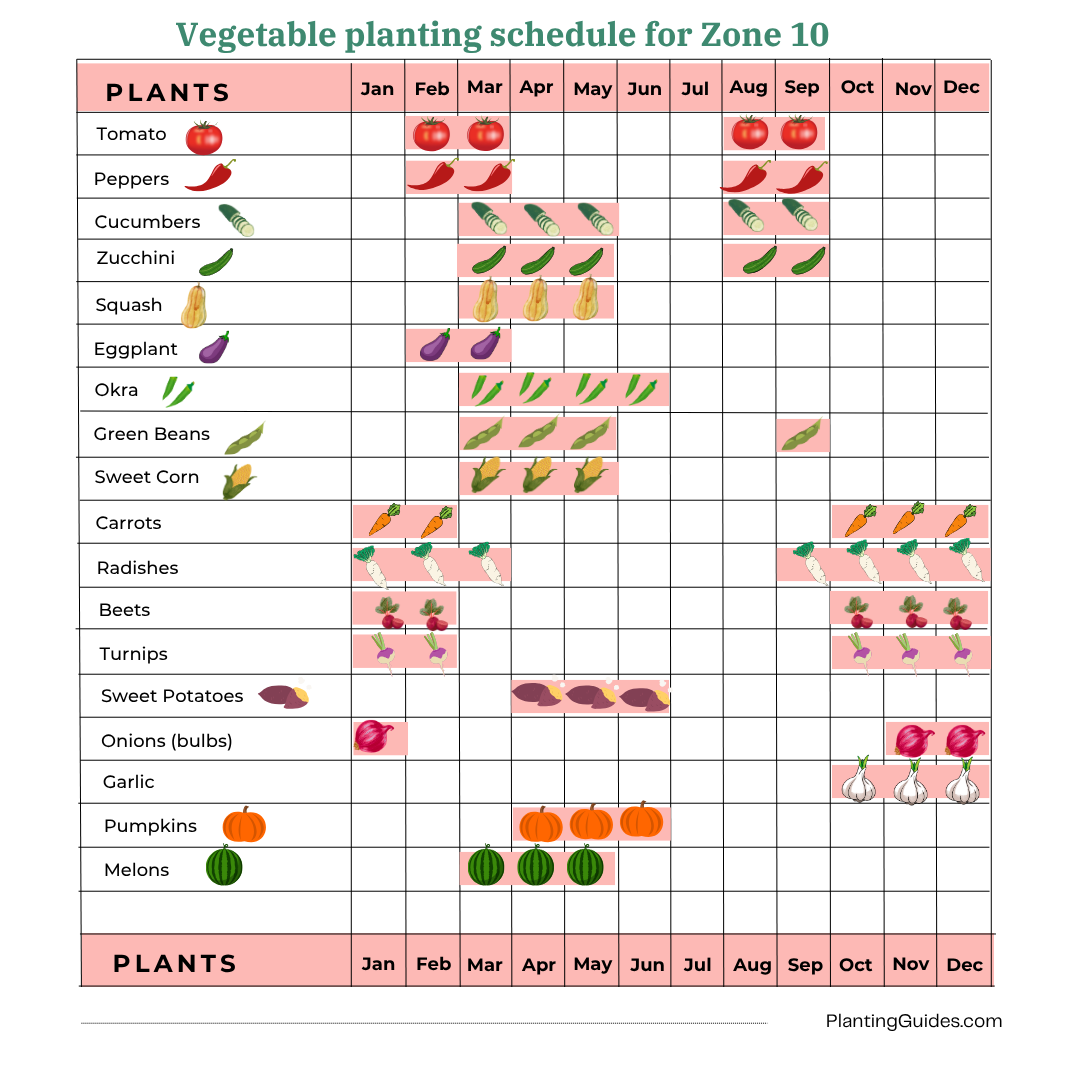
Always plant warm-season vegetables (like tomatoes, cucumbers, and corn) in early spring or late summer to avoid extreme heat, and cool-season root vegetables (like carrots, beets, and radishes) in fall or winter for better growth.
Zone 10 gardeners can grow vegetables nearly year round. Just follow seasonal timing and pick the right varieties to get the best results.
Fruits & Berries
Zone 10 has one of the best climates for growing fruits and berries. The weather is warm, the growing season is long, and frost is very rare. That means you can enjoy fresh, homegrown fruit almost all year.
This table lists the best fruits and berries that grow well in Zone 10. They’re easy to care for, give you lots of fruit, and love the warm weather.
| Fruit/Berry | Best Planting Time | Planting Method | Transplanting Time | First Harvest Time | Variety Recommendations |
|---|---|---|---|---|---|
| Mango | Mar – May | Grafted sapling | Spring | 2–3 years | Haden, Valencia Pride, Carrie |
| Banana | Mar – Jul | Sucker or tissue culture | N/A | 12–18 months | Dwarf Cavendish, Rajapuri |
| Papaya | Mar – Jul | Direct seed or seedling | 6–8 weeks | 6–9 months | Red Lady, Tainung #2 |
| Guava | Mar – Jun | Seed or grafted plant | 12–18" tall | 1–2 years | Tropical White, Mexican Cream |
| Avocado | Feb – Apr | Grafted tree | Spring | 2–3 years | Hass, Bacon, Fuerte |
| Pineapple | Anytime (frost-free) | Crown or sucker | N/A | 18–24 months | Sugarloaf, Smooth Cayenne |
| Strawberries | Oct – Dec | Bare root or transplants | Immediately | 3–4 months | Albion, Chandler, Seascape |
| Blueberries | Nov – Feb | Low-chill container plant | Dormant stage | 1–2 years | Sunshine Blue, Misty, Sharpblue |
| Mulberries | Dec – Feb | Bare root or container | Spring | 1–2 years | Pakistan, Black Beauty |
| Figs | Jan – Mar | Bare root or container | Early spring | 1–2 years | Brown Turkey, Black Mission |
| Pomegranate | Jan – Mar | Bare root or container | Spring | 2–3 years | Wonderful, Angel Red |
| Dragon Fruit | Spring – Summer | Cutting or transplant | When rooted | 1–2 years | American Beauty, Vietnam White |
| Loquat | Nov – Mar | Grafted tree or seedling | Late winter | 2–3 years | Gold Nugget, Big Jim |
| Blackberries | Dec – Feb | Bare root | Dormant stage | 1 year | Natchez, Apache |
| Goji Berries | Fall or Spring | Transplant or seedling | 6–8 weeks | 1–2 years | Phoenix Tears, Crimson Star |
| Barbados Cherry | Mar – Jul | Transplant or cutting | 6–8 weeks | 1–2 years | Florida Sweet, Dwarf |
| Passionfruit | Mar – Jun | Transplant seedling | 4–6 weeks | 1 year | Frederick, Purple Possum |
| Starfruit | Mar – Jun | Grafted tree | Spring | 1–2 years | Arkin, Fwang Tung |
| Calamondin | Late Winter – Spring | Grafted tree or potted | Spring | 1–2 years | Standard Calamondin |
| Kumquat | Fall – Winter | Grafted tree | Dormant season | 1–2 years | Meiwa, Nagami |
| Olive | Fall – Winter | Container or transplant | Cool season | 3–4 years | Arbequina, Manzanillo |
Visual Chart:
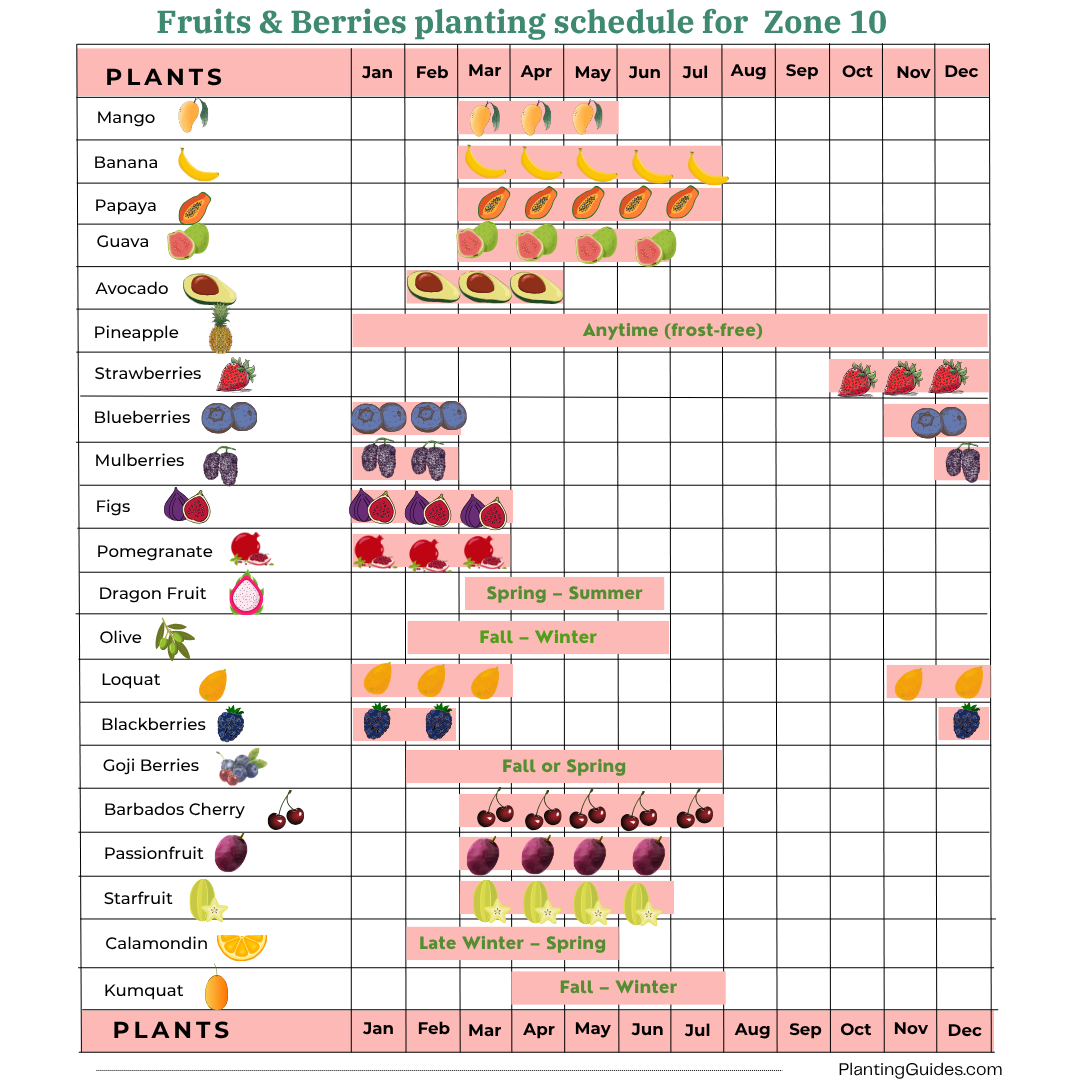
These fruits and berries grow really well in Zone 10 and are perfect for both new and experienced gardeners.
You can grow most of them in the ground or in big pots, Just give them lots of sunlight, well-drained soil, and water them regularly, that’s all you need to get healthy, delicious harvests.
Flowers Planting Schedule for Zone 10
Zone 10 stays warm almost all year, so you can grow flowers in every season. But to get the best results, you need to plant them at the right time and choose the ones that grow well in this climate.
I've researched and listed the top-performing flowers for Zone 10 in the table below. This chart will help you plan exactly when and how to plant each flower.
| Flower Name | Best Planting Time | Planting Method | Transplanting Time | First Bloom | Perennial or Annual |
|---|---|---|---|---|---|
| Marigold | Feb–Mar | From Seeds | 3–4 weeks after sprouting | 6–8 weeks | Annual |
| Zinnia | Mar–Jun | Direct from Seeds | Not needed | 4–6 weeks | Annual |
| Petunia | Feb–Apr | Seeds or Nursery Plant | 4–5 weeks (if from seed) | 8–10 weeks | Annual |
| Sunflower | Mar–Jul | Direct from Seeds | Not needed | 8–12 weeks | Annual |
| Hibiscus | Mar–Aug | Nursery Plant | After 2–3 weeks in pot | First Summer | Perennial |
| Lantana | Mar–May | Nursery Plant/Cutting | 2–3 weeks after rooting | First Season | Perennial |
| Salvia (Red/Blue) | Mar–Jul | Seeds or Cuttings | 3–4 weeks after sprouting | 8–10 weeks | Perennial |
| Bougainvillea | Feb–Apr | Nursery Plant | 2 weeks after planting | 2–3 months | Perennial |
| Nasturtium | Feb–Apr | Direct from Seeds | Not needed | 6–8 weeks | Annual |
| Blanket Flower (Gaillardia) | Mar–Jun | Seeds or Seedlings | 3–4 weeks after sprouting | 6–8 weeks | Perennial |
| Calendula | Nov–Feb | From Seeds | 3–4 weeks after sprouting | 6–8 weeks | Annual (cool-season) |
| Cosmos | Mar–May | Direct from Seeds | Not needed | 7–9 weeks | Annual |
| Lavender | Oct–Mar | Seeds or Nursery Plant | 6–8 weeks after germination | First Summer (2nd year if from seed) | Perennial |
| Dahlias | Feb–Apr | Tubers or Nursery Plant | After last frost (if any) | 8–10 weeks | Perennial (Zone 10) |
| Snapdragons | Nov–Feb | Seeds or Seedlings | 3–4 weeks after sprouting | 8–12 weeks | Annual (cool-season) |
Visual Chart:
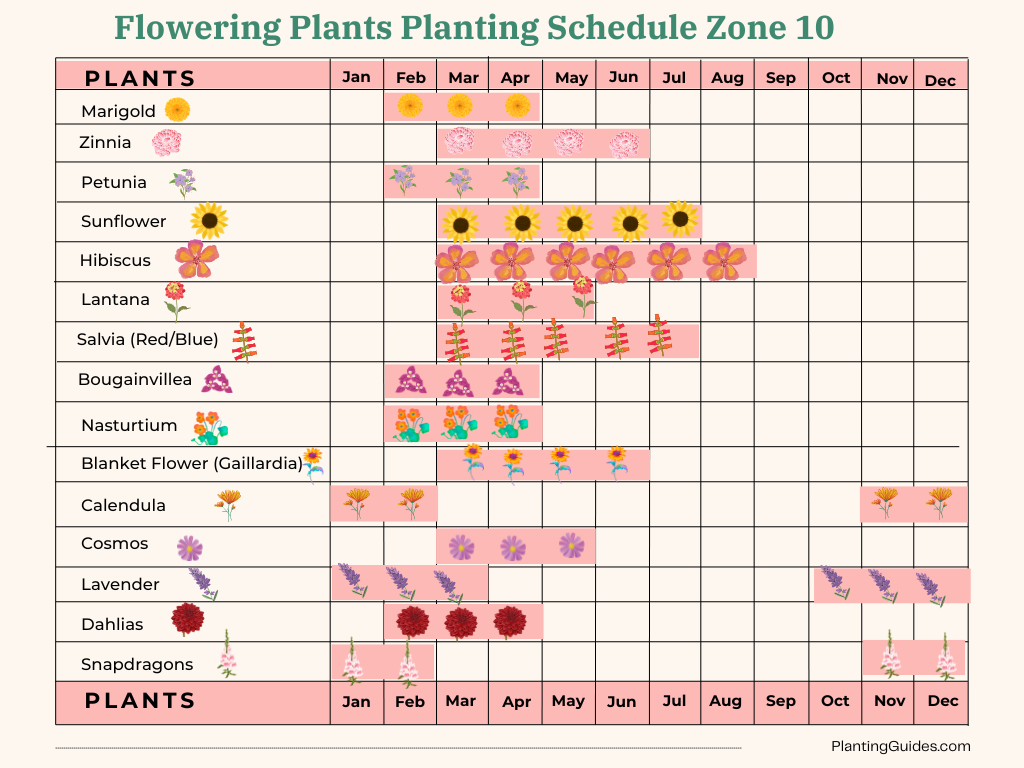
If you're new to gardening, start with nursery plants. More experienced? Try seeds or tubers.
You can pick some flowers that bloom early, like snapdragons or calendulas, and some that bloom later, like dahlias or sunflowers. This way, when one group stops blooming, the next group starts, and your garden stays full of flowers all season.
Herbs
Herbs love Zone 10 because the warm weather, long growing season, and little to no frost let them grow almost all year with very little trouble. That means you don’t have to wait for spring, herbs can thrive in your garden, on your balcony, or even in containers almost any time.
Based on Zone 10’s weather, rainfall, and soil, I’ve listed the best herbs that grow well here, along with tips on when and how to plant them for the best results.
| Herb Name | Best Planting Time | Planting Method | Transplanting Time | First Harvest | Variety Recommendations |
|---|---|---|---|---|---|
| Basil | Feb – Sep | Sow seeds directly or indoors | 3–4 weeks after germination | 4–6 weeks after transplant | Genovese, Thai, Lemon Basil |
| Cilantro | Oct – Feb | Sow seeds directly | Not required | 3–4 weeks | Slow Bolt, Santo |
| Parsley | Oct – Mar | Indoors or direct sow | 4–5 weeks after germination | 10–12 weeks | Italian Flat Leaf, Triple Curled |
| Mint | Anytime (best: spring/fall) | Root division or transplants | 2–3 weeks after planting | 4–6 weeks | Spearmint, Peppermint |
| Oregano | Feb – May | Seeds indoors or starter plants | After 4–6 true leaves | 6–8 weeks | Greek Oregano, Italian Oregano |
| Thyme | Feb – Apr | Seeds indoors or cuttings | When 3–4 inches tall | 6–8 weeks | English Thyme, Lemon Thyme |
| Rosemary | Feb – May | Cuttings or transplants | 4–5 weeks after planting | 6–8 weeks | Tuscan Blue, Arp |
| Chives | Oct – Feb | Seeds or divide clumps | 3–4 weeks after germination | 6–8 weeks | Common Chives, Garlic Chives |
| Dill | Oct – Feb | Sow directly | Not needed | 4–6 weeks | Bouquet, Fernleaf |
| Lemongrass | Mar – Jun | Stalk division or nursery pots | 3–4 weeks after planting | 3–5 months | East Indian Lemongrass |
Visual Chart:

If you’re new to growing herbs, start with basil, mint, or oregano, they grow fast, are easy to manage, and perfect for indoor pots too.
Even though it rarely frosts in Zone 10, surprise cold snaps can happen, keep a lightweight cover handy just in case.
If you trim or snip the leaves of herbs regularly, the herbs will grow faster and become bushier. It also stops them from making flowers too early.
I hope this planting schedule makes your planning easier and your garden more productive. No matter what you're planting, basil on the balcony or tomatoes in raised beds, Zone 10 gives you lots of options.
